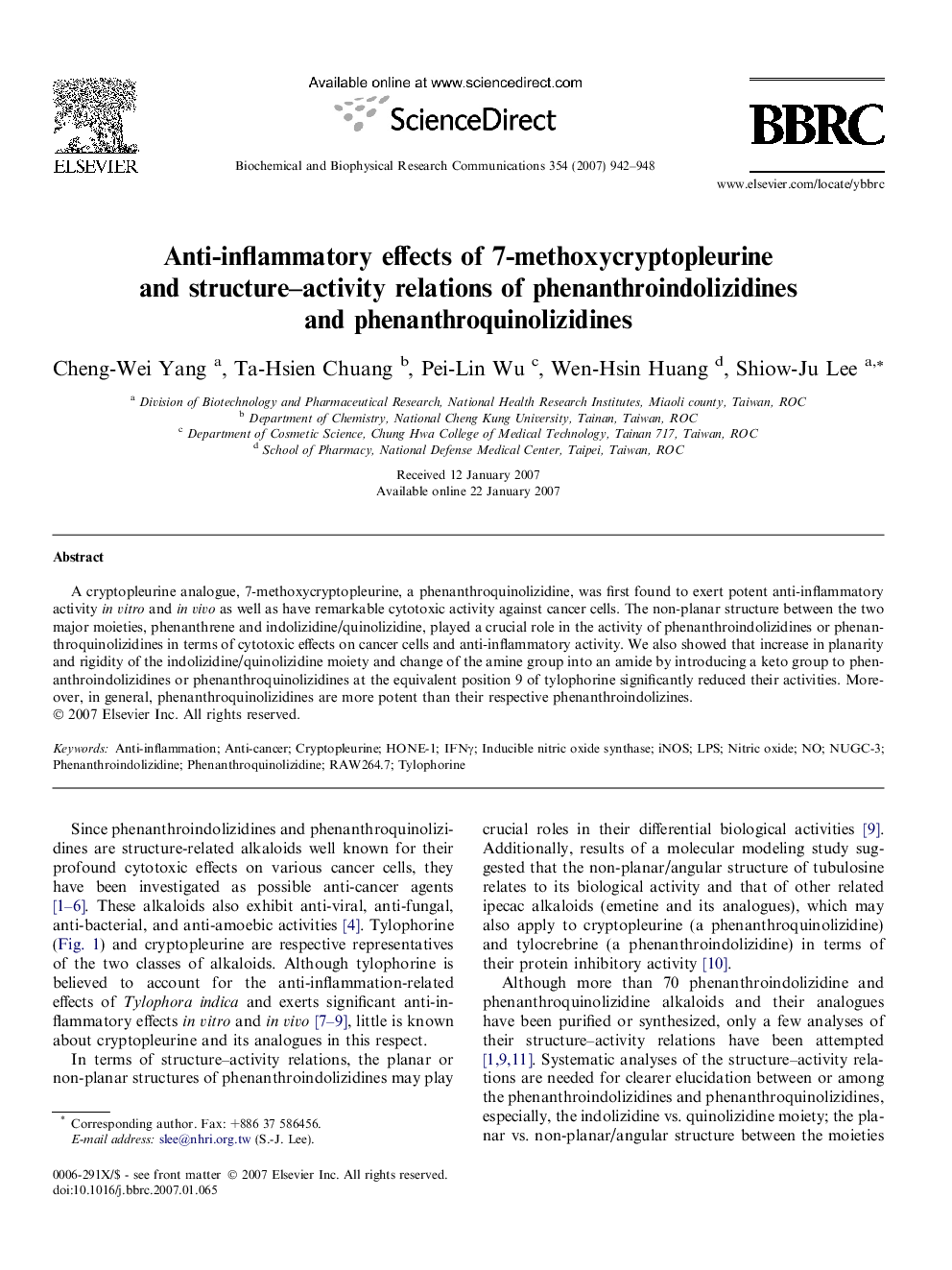| Article ID | Journal | Published Year | Pages | File Type |
|---|---|---|---|---|
| 10767501 | Biochemical and Biophysical Research Communications | 2007 | 7 Pages |
Abstract
A cryptopleurine analogue, 7-methoxycryptopleurine, a phenanthroquinolizidine, was first found to exert potent anti-inflammatory activity in vitro and in vivo as well as have remarkable cytotoxic activity against cancer cells. The non-planar structure between the two major moieties, phenanthrene and indolizidine/quinolizidine, played a crucial role in the activity of phenanthroindolizidines or phenanthroquinolizidines in terms of cytotoxic effects on cancer cells and anti-inflammatory activity. We also showed that increase in planarity and rigidity of the indolizidine/quinolizidine moiety and change of the amine group into an amide by introducing a keto group to phenanthroindolizidines or phenanthroquinolizidines at the equivalent position 9 of tylophorine significantly reduced their activities. Moreover, in general, phenanthroquinolizidines are more potent than their respective phenanthroindolizines.
Keywords
Related Topics
Life Sciences
Biochemistry, Genetics and Molecular Biology
Biochemistry
Authors
Cheng-Wei Yang, Ta-Hsien Chuang, Pei-Lin Wu, Wen-Hsin Huang, Shiow-Ju Lee,
